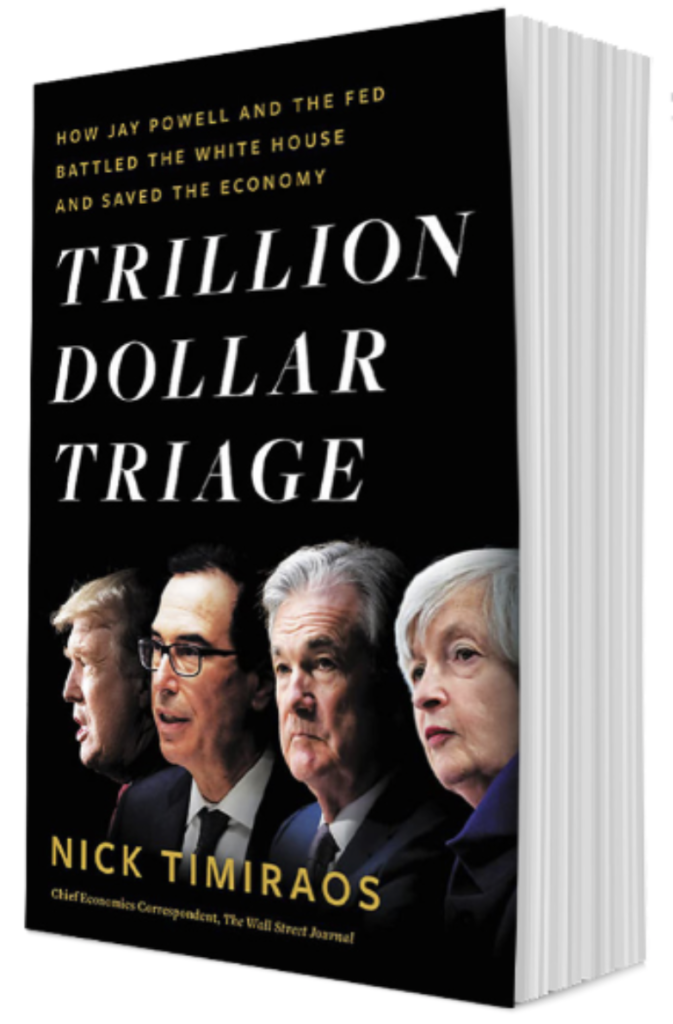Stop the bleeding
Evaluating the Fed’s post-COVID policies.
From January to June of this year, prices rose by 9.1 percent. It was the largest 12-month increase since the period ending November 1981 according to the U.S. Bureau of Labor Statistics — a spike in the Consumer Price Index not seen since Diana Ross and Lionel Richie topped the Billboard chart with their song “Endless Love” and Raiders of the Lost Ark was a box office smash.
But what caused this? A new book, Trillion Dollar Triage: How Jay Powell and the Fed Battled a President and a Pandemic – and Prevented Economic Disaster, by TheWall Street Journal’s chief economics correspondent Nick Timiraos, provides the answer.

First, Timiraos neatly summarizes the problem facing monetary policymakers, led by Federal Reserve chair Jay Powell, when COVID-19 hit in early 2020. “The central bank can help boost demand when the economy slumps; there was no precedent for what policymakers would soon face — the equivalent of an economy placed into a medically induced coma.”
But while the situation was unprecedented, the Fed’s response, in terms of the tools it used, was not: It printed money and bought assets. What was unprecedented was the scale. The Monetary Base increased by 49 percent from February to May 2020 as the Federal Reserve’s balance sheet grew by 67 percent over the same period.
In 2008, when the Fed pumped liquidity into the financial system, financial institutions largely sat on it, preventing much of the flow of capital from reaching the economy. This “sterilization” meant that the injection didn’t cause a commensurately high rate of inflation. Timiraos explains how the Fed worked to make sure that this time the new money actually found its way into the economy. And it did: The broad M2 measure of the money supply increased by 41 percent between February 2020 and March 2022. It is changes in the money supply on this measure divided by real Gross Domestic Product that are closely correlated with the rate of inflation.
But with a tanking economy, the Fed shifted priorities away from keeping inflation in check. In August 2020, acting on an initiative of the previous year, Timiraos writes, “Powell was moving the Fed toward a new regime, dubbed ‘flexible average inflation targeting,’ or FAIT, that would allow for a period in which the committee, instead of aiming for two percent no matter what, would deliberately nudge inflation somewhat above two percent in some circumstances.”
This reversed the move from discretionary to rules based monetary policy, which most central banks had adopted after the inflation of the 1970s. Responding to doubts that the Fed could raise inflation above two percent, Timiraos recalls, “Powell was unfazed. ‘I’m not at all concerned that people are saying, Oh, it’s not credible… It’ll be credible when we get inflation meaningfully above two percent for an extended period and we don’t react to it. We’ll just say, Look at that.’”
This explains why Powell stayed so sanguine for so long. As late as July 2021, when inflation hit 5.3 percent over the year, he was still arguing that surging inflation was “transitory.” The monetary base kept expanding until December 2021 when it was 86 percent larger than it had been in February 2020, and the Fed’s balance sheet continued growing until April 2022, by which time it was 115 percent bigger than in February 2020. Inflation has now been meaningfully “above two percent” since March 2021, to nobody’s obvious benefit. Indeed, in July 2022, average inflation adjusted wages were lower than they were in June 2019.
This book is hero history. We learn that earlier in his career, Powell, “with a shock of silver in the middle of his dark hair…wielded a notable ability to dial down the pressure in a room.” Timiraos concludes that “Powell displayed speed and decisiveness at a time when much of the country was struggling with a bottomless pandemic and a president who refused to acknowledge reality.” This is central banking as Robert Ludlum potboiler.
Nevertheless, Powell emerges from this book looking something of a buffoon. “If inflation stays too high for too long (or if longer-term inflation expectations move up too much),” Timiraos writes, “the Fed may be forced to make a politically unsavory decision: raise rates….”
That is precisely where the Fed is now, stuck behind the eight ball. Timiraos ruefully notes that “the political hazards loom large in part because Powell placed such emphasis on promoting more inclusive growth. Going forward, the Fed may be exposed to critiques of racial insensitivity for raising rates.” Timiraos continues, paraphrasing and then quoting Warren Buffet: “Nobody knew exactly what the consequences would be of the Fed pumping so much credit into the system, said [Warren] Buffet. ‘But we do know the consequences of doing nothing… [T]he Fed then…did whatever it takes, squared, and we owe them a huge thank-you.’”
In fairness to Powell and others, the chaos of those early COVID-19 days should be remembered. But we are moving into a situation where we can begin to assess what the consequences were of the Fed pumping so much credit into the system. A reckoning of costs against benefits in monetary policy, as in other areas, is coming due. A disaster may not have been prevented, only postponed.